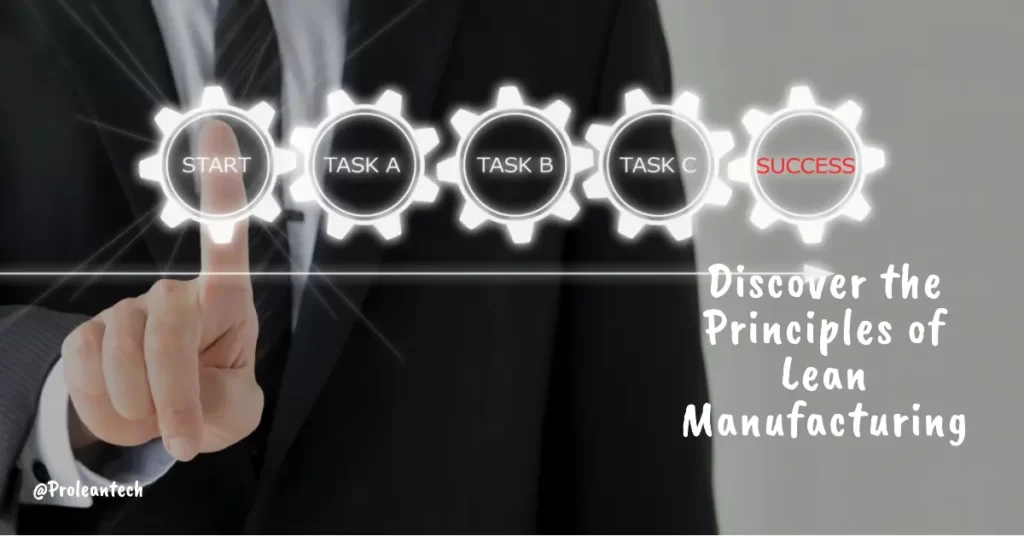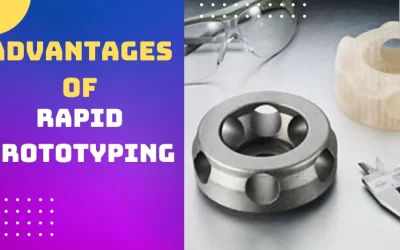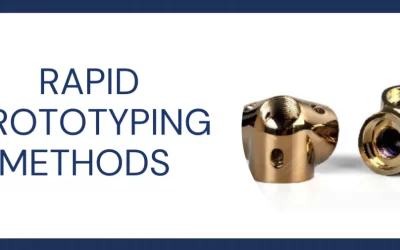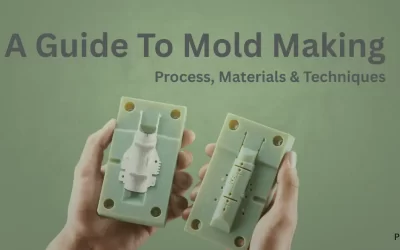“Lean manufacturing principle refers to a systematic method for waste minimization within a manufacturing system without sacrificing productivity. It considers the technology to minimize the use of resources and maximize the end value in manufacturing “

Lean manufacturing principles emerge as the catalysts for operational excellence and efficient manufacturing. It originally stemmed from the Toyota Production System and has evolved into a globally embraced philosophy. Lean manufacturing focuses on waste reduction, continuous improvement, and value creation. It transcends beyond mere manufacturing processes, molding organizational cultures and reshaping industrial landscapes. This article will walk into the intricate tapestry of lean manufacturing principles, exploring their essence, practical examples, and the transformative tools and techniques they encompass.
The Foundation of Lean Manufacturing Principles
Lean manufacturing principles are pivotal to realizing efficiency, cost-effectiveness, and waste reduction within a manufacturing environment. These principles have evolved over the years, permeating various industries and fundamentally reshaping production and operational management approaches. Below, we delve into the foundational elements of lean manufacturing principles, examining their origins, relevance, and integral role in transforming manufacturing landscapes.
Origin and Evolution
Lean manufacturing principles originated from the Toyota Production System, a revolutionary approach developed by Toyota to optimize production, enhance quality, and minimize waste. This system laid the groundwork for lean manufacturing, propelling it from an organizational strategy to a global philosophy. The evolution of lean principles signifies this approach’s adaptability and enduring relevance, revealing its capacity to address contemporary challenges and drive sustainable development in the manufacturing sector.
The Core Principles

Lean manufacturing principles
Lean manufacturing is built upon five core principles that serve as the pillars supporting the lean philosophy:
- Identifying Value: This principle focuses on understanding what customers value in a product, directing organizations to align their offerings with customer needs and expectations.
- Mapping the Value Stream: It involves scrutinizing the entire production process, identifying waste and inefficiencies, and creating a roadmap for lean implementation.
- Creating Flow: It is centered on streamlining processes to ensure smooth and uninterrupted movement of materials, information, and products throughout the production cycle.
- Establishing Pull: This principle advocates for producing to meet actual demand, reducing overproduction, and minimizing inventory costs.
- Seeking Perfection: Pursuing continuous improvement and learning is the essence of this principle, inspiring organizations to refine their processes and enhance quality relentlessly.
Now, Let’s discuss these above principles in depth, elaborating on their importance, practical examples, and more.
Identifying Value: The Starting Point
Identifying value means discerning what customers find worthwhile in a product or service. The primary significance of this principle lies in its focus on customer-centricity. It’s about understanding the client’s needs and tailoring the production process to fulfill them effectively. Without a keen sense of what consumers value, the risk of inefficiency and waste increases markedly. Identifying value ensures that every step of the manufacturing process contributes to creating a product that meets consumer needs and expectations.
Practical Example
Consider a company manufacturing electronic devices. The company must prioritize eco-friendly materials and production processes if consumers value sustainability. Here, identifying value would mean conducting market research, collecting feedback, and analyzing consumer behavior to integrate sustainability effectively. Thus, producing a green product isn’t just about using sustainable materials but also reducing waste and energy consumption.
Click here to download: Comprehensive guide on lean manufacturing
Mapping the Value Stream: The Blueprint
Value stream mapping is a visual representation of every step involved in the material and information flows needed to bring a product from order to delivery. This lean-management method is crucial for analyzing the current state and designing a future state for the series of events that take a product from the beginning of the specific process until it reaches the customer. The importance of this process cannot be overstated as it illuminates areas of waste and inefficiency which, once addressed, can significantly enhance productivity and reduce costs.
So, value stream mapping can significantly increase a company’s overall operational efficiency by eliminating waste and improving process flow
Table: Importance of value mapping
| Importance | Description |
|---|---|
| Waste Identification | Helps in identifying non-value-adding activities and waste |
| Process Optimization | Enhances the efficiency of the production process |
| Customer Value | Focused on delivering higher value to the customers |
Practical Example
For instance, an automobile manufacturer may use value stream mapping to analyze the production process of a car model. Here, every detail, from procuring raw materials to delivering the final product, is meticulously examined. Recognizing areas of delay, overproduction, or unnecessary inventory enables the manufacturer to rectify these inefficiencies, streamline the process, and subsequently deliver higher value to the customers.
Creating Flow with Lean Manufacturing principles
Creating flow is defined as the uninterrupted movement of materials, information, and products through the entire production process. This aspect of lean manufacturing is vital as it focuses on streamlining processes to reduce waiting times, eliminate bottlenecks, and optimize the production flow. This continuous and harmonious flow is paramount to maintaining operational momentum and ensuring that every component of the production chain is seamlessly interlinked to deliver value efficiently. Achieving smooth flow is crucial to optimizing production time and maintaining a consistent and efficient operational rhythm.
Table: Importance of flow creation in manufacturing
| Importance | Description |
|---|---|
| Reduced Lead Time | A smooth flow reduces the time taken from order to delivery |
| Operational Efficiency | Eliminates disruptions and enhances productivity |
| Cost Effectiveness | Streamlined processes reduce operational costs |
Practical Example
A practical example of creating flow can be seen in a beverage bottling company. The goal is to ensure that every step, from filling the bottles to labeling, packaging, and dispatching, occurs without delays or interruptions. By aligning each phase of the process meticulously, the company can produce beverages at an optimal rate, meeting market demands effectively while minimizing downtime and waste.
Aligning Production with Demand
The concept of ‘pull’ in lean manufacturing represents a system where production is driven by actual demand, contrasting the traditional ‘push’ system where goods are produced in anticipation of future demand. Establishing pull is fundamentally important in lean methodologies as it prevents the accumulation of excess inventory, thus reducing holding costs and minimizing the risk of obsolescence.
So, the integration of pull systems is elemental for achieving a harmonious balance between supply and demand, promoting a more responsive and agile production environment.
Table: Why production needs to align with demand
| Importance | Description |
|---|---|
| Inventory Management | Prevents overproduction and excess inventory holding |
| Cost Reduction | Minimizes storage, holding, and obsolescence costs |
| Responsiveness | Enhances ability to adapt to actual market demand |
Practical Example
In a real-world scenario, a furniture manufacturer utilizing the pull system would initiate production cycles based on actual orders received rather than forecasts. This approach ensures that resources are allocated efficiently, mitigating the chances of producing unwanted items and tying up capital in unsold inventory.
Seeking Perfection: The Continuous Journey
Seeking perfection in lean manufacturing is the pursuit of continual improvement and learning, refining processes, reducing waste, and enhancing quality persistently. This principle is vital as it fosters a culture of relentless improvement and innovation within the organization.
It keeps organizations dynamic, allowing them to adapt, evolve, and remain competitive in a constantly changing market environment. The journey towards perfection is incremental, focusing on consistent and continual small improvements that aggregate to significant enhancements over time.
Practical Example
A pertinent example is a tech manufacturing company implementing incremental software updates to optimize the performance of its products continually. The firm regularly analyzes performance metrics, collects user feedback, and iterates its software, thereby continually enhancing user experience and product value. This relentless pursuit of perfection underscores the significance of iterative refinement in sustaining excellence and market relevance.
What Are the Lean Manufacturing Tools?
Lean Manufacturing Tools are a diverse set of methodologies and techniques aimed at achieving optimal efficiency by eliminating waste and improving process flow. Each tool addresses specific needs and challenges within a manufacturing environment, aiding in the relentless pursuit of operational excellence and continuous improvement. These tools are imperative for businesses seeking to streamline their operations, reduce costs, and enhance overall productivity.
Table: Lean Manufacturing Tools
| Tool | Purpose | Benefit |
|---|---|---|
| 5S System | Organizes the workplace through sorting, setting in order, shining, standardizing, and sustaining. | Enhanced Efficiency & Productivity |
| Kanban | A visual scheduling system focusing on creating a pull production system. | Reduced Inventory & Lead Time |
| Value Stream Mapping | A tool used to visually map the flow of production, identifying waste and areas for improvement. | Identification & Elimination of Waste |
| Gemba Walks | Involves management going to the production floor to observe processes and ask questions to understand the value stream better. | Insightful Understanding & Continuous Improvement |
| Poka-Yoke | Error-proofing techniques to prevent defects from occurring. | Reduction in Defects & Rework |
| Kaizen | The practice of continuous improvement involving all employees. | Incremental Improvements & Innovation |
Implementation Framework for Lean Manufacturing Principles
Embarking on the lean journey requires a structured and coherent framework. It begins with a clear understanding of lean principles and their implications, followed by meticulous planning, strategic execution, and consistent evaluation. The organization needs to develop a roadmap delineating the goals, strategies, timelines, and responsibilities pertaining to the implementation of lean principles.
The strategic integration of lean principles necessitates a holistic approach, encompassing organizational commitment, clear direction, and relentless pursuit of excellence.
Table: Steps for Implementation
| Steeps | Description |
|---|---|
| Develop Understanding | Gain comprehensive insights into lean principles and their relevance to the organization. |
| Create a Vision | Develop a clear vision and objectives for implementing lean principles. |
| Build a Lean Team | Formulate a dedicated team responsible for overseeing the implementation process. |
| Map the Value Stream | Identify and analyze the existing processes and their flow to ascertain areas of waste and improvement. |
| Execute and Monitor | Execute the lean strategies, monitor progress, and make adjustments as necessary. |
| Cultivate a Lean Culture | Foster an organizational culture that embraces continuous improvement and lean philosophies. |
Overcoming Implementation Challenges
The implementation of lean manufacturing principles is fraught with challenges, including resistance to change, lack of understanding, and misalignment of organizational goals. Addressing these challenges requires resilience, effective communication, and continuous training and education. Organizations need to create an inclusive environment where concerns are addressed, feedback is valued, and the benefits of lean principles are clearly communicated and demonstrated.
Strategies to Overcome Challenges
- Effective Communication: Regularly communicate the goals, benefits, and progress of lean implementation to all stakeholders.
- Training and Education: Offer continuous learning opportunities to enhance understanding and skills related to lean principles.
- Feedback Mechanism: Establish platforms for employees to voice their concerns, suggestions, and feedback regarding lean implementation.
- Demonstrate Benefits: Clearly showcase the positive impacts and benefits achieved through the implementation of lean principles to motivate and reinforce commitment.
Relation between Lean Manufacturing Technique and Principles
Lean manufacturing techniques and principles interweave to create a harmonious duet, orchestrating an environment where efficiency is maximized, and waste is minimized. This symbiotic relationship is integral in creating an operational structure where each aspect enhances and supports the other, fostering a sustainable framework for continuous improvement and operational excellence.
The Synchrony of Lean Principles and Techniques
Lean manufacturing principles are the philosophical foundation emphasizing value creation, waste elimination, and perpetual enhancement. These principles serve as the guiding light for the implementation of various strategies and methodologies, the tangible actions, commonly known as lean manufacturing techniques.
“Lean principles and techniques interact in a balanced duet, where principles guide the rhythm and techniques produce the harmonies, creating a cohesive, enriching symphony of operational excellence.”
Table: Foundational Framework of Lean Manufacturing principles
| Lean Principle | Actualizing Technique | Description |
|---|---|---|
| Identifying Value | Value Stream Mapping | Visually represents the flow of materials and information to deliver a product to the customer. |
| Creating Flow | Cellular Manufacturing | Ensures seamless and uninterrupted production flow through grouped workstation organization. |
| Seeking Perfection | Kaizen | Provides a structured methodology for identifying areas for improvement and implementing enhancements. |
How is Lean Manufacturing Applied in Prolean CNC Machining?
Lean manufacturing principles stand as the backbone of Prolean CNC Machining, providing a structured framework that promotes efficiency, precision, and sustainability in all production aspects. Prolean employs a myriad of lean manufacturing principles in its CNC machining processes. Here are some ways in which these principles are applied:
- Value Stream Mapping: Identifying and analyzing the flow of materials and information required to bring a product to the consumer.
- Continuous Improvement (Kaizen): Regularly refining processes and methodologies to eliminate waste and improve efficiency.
- Just-In-Time Manufacturing: Producing what is needed, when it is needed, and in the amount needed, reducing inventory costs and lead times.
Implementation at Prolean
At Prolean, lean manufacturing is not just a set of principles; it’s an integral part of the company’s operational DNA. Our experienced professionals, well-versed in lean methodologies, apply these principles to every project, offering tailored solutions designed to meet individual client needs.
“Lean manufacturing principles are pivotal in achieving operational excellence and sustainable growth. Companies like Prolean are at the forefront, demonstrating the immense value and transformative potential of lean methodologies in CNC machining.” – Dikendra Acharya, Industry Engineer
Now, let’s break down the implementation of lean principle at Prolean
1. Customized Solutions
Prolean provides bespoke solutions, that address the unique requirements and challenges of each project. This customization ensures that lean principles are seamlessly integrated, aligning perfectly with the existing processes and objectives of the clients.
2. Process Refinement
By continually refining manufacturing processes, Prolean ensures the elimination of inefficiencies and bottlenecks. This refinement leads to streamlined operations, reducing lead times and enhancing overall productivity.
3. Sustainable Growth
Lean manufacturing at Prolean is not just about short-term gains; it’s about fostering long-lasting, sustainable growth. By focusing on sustainability, Prolean aids organizations in developing resilient and eco-friendly manufacturing practices.
4. Efficiency Enhancement
Through the diligent application of lean principles, Prolean elevates operational efficiency, optimizing resource utilization, and minimizing waste. This efficiency is a catalyst for increased productivity and reduced operational costs.
Conclusion
Lean manufacturing principles guide industries towards an efficiency, innovation, and sustainability horizon. They weave the fabric of organizational cultures, nurturing the seeds of continuous improvement and value creation. The journey from identifying value to seeking perfection is a transformative odyssey, enlightening the realms of manufacturing with the wisdom of lean philosophy.
Integrating profound principles with transformative techniques paves the way for a new manufacturing era. Every stride resonates with the echoes of operational excellence, and every creation is a testament to the harmonious dance of value, flow, and perfection.
Read more: Transform Your Manufacturing Business with Prolean’s On-Demand Manufacturing Services
FAQs
How do lean manufacturing principles reduce waste?
Lean manufacturing principles focus on identifying and eliminating non-value-adding activities, optimizing processes, and aligning production with actual demand, thus reducing various forms of waste such as overproduction, waiting, and defects.
Can lean manufacturing principles be applied to sectors other than manufacturing?
Absolutely. Lean principles are versatile and can be adapted to various sectors including healthcare, service industries, and software development, fostering efficiency and value creation across diverse organizational landscapes.
How do lean manufacturing tools complement lean principles?
Lean manufacturing tools are practical instruments designed to implement, sustain, and optimize lean principles by addressing specific areas such as organization (5S), flow (Kanban), and quality (Poka-Yoke).
Are lean manufacturing principles cost-effective for small businesses? Yes, lean manufacturing principles are scalable and can be effectively implemented in small businesses, leading to reduced operational costs, enhanced efficiency, and improved product quality.
How do lean principles enhance customer value?
By focusing on identifying value from the customer’s perspective and eliminating non-value-adding activities, lean principles ensure that every aspect of the product aligns with customer needs and expectations, enhancing overall value.
What role do employees play in implementing lean manufacturing principles?
Employees are integral to the successful implementation of lean principles. Their engagement, insights, and commitment are pivotal in optimizing processes, identifying areas for improvement, and cultivating a culture of continuous learning and improvement.




I think How is Lean Manufacturing Applied in Prolean CNC Machining? describes the process of adaptation and advantages than the step-wise discussion. and thank you for the listing of lean manufacturing tools so nicely in table.
Yes, i have described How is Lean Manufacturing Applied in Prolean CNC Machining? as a real-life example to clear the picture after elaborating its fundamentals. It was my first person experience as i had worked closely on that project at Prolean.